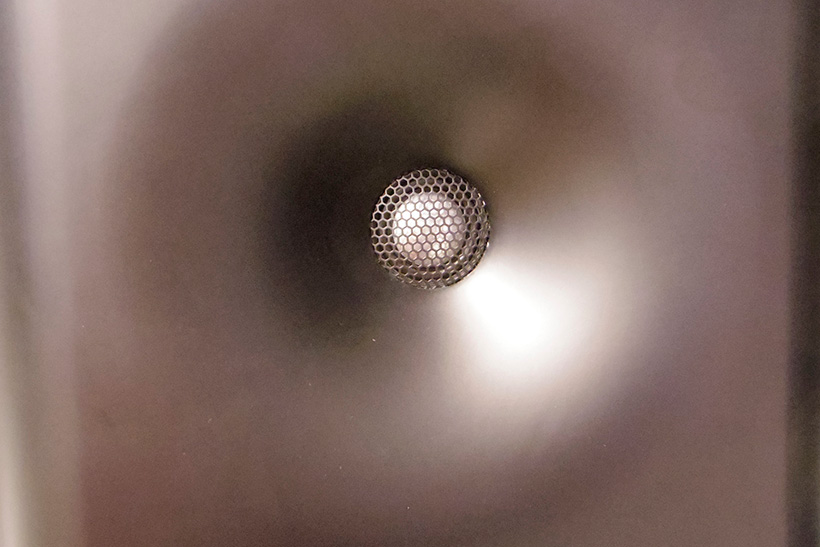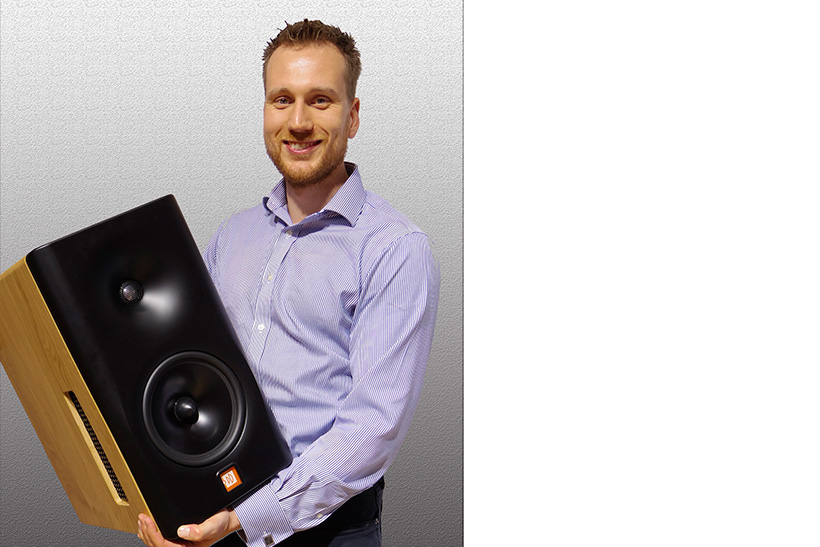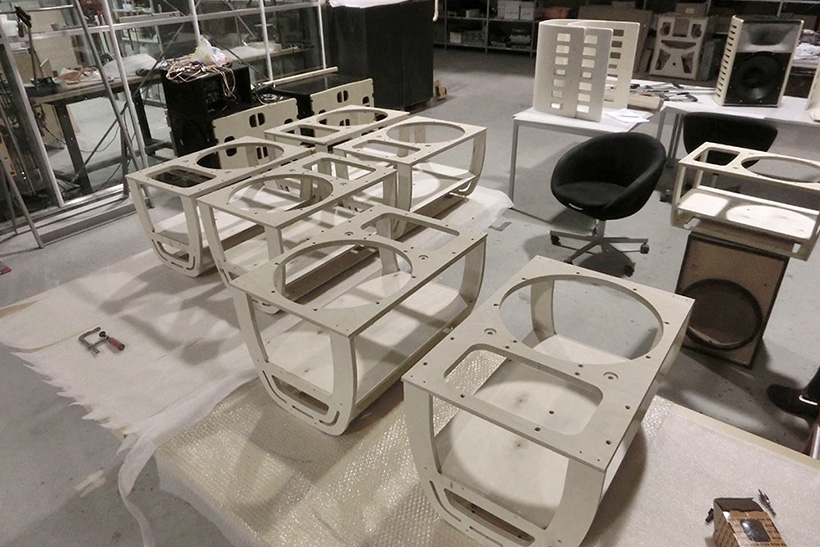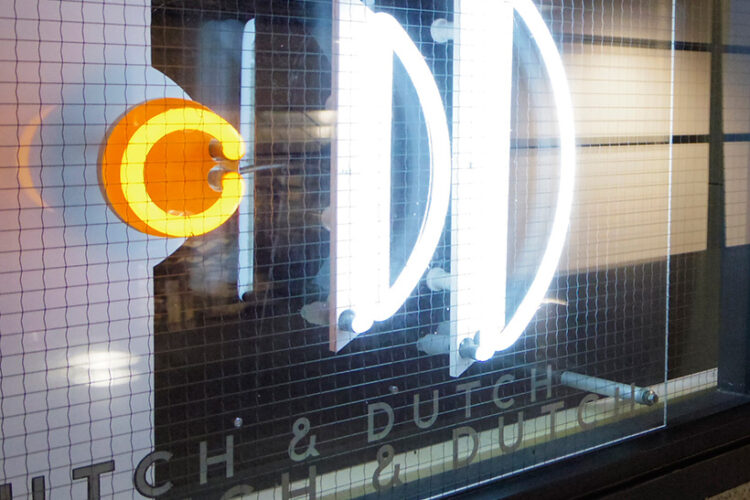Having made a name with new-thinking in professional loudspeakers, a Dutch brand is launching its foray into hi-fi territory with some highly researched products, as Trevor Butler discovered on a visit to The Netherlands.
Conventional box loudspeakers may become a thing of the past if microphone technology is adapted to perfect a directional monitor inspired by some eminent research. That’s the hope, at least, of a new company Dutch & Dutch – a name derived because so many of the components are sourced locally in The Netherlands: so Dutch design and Dutch manufacture.

The first mention of a concept that is similar to the D&D acoustic cardioid midrange is in a paper by Harry F. Olson published in 1973. An audio legend who worked for the world-renowned RCA Laboratories in New Jersey. Work by TJ Holmes, another acoustician investigating the area of cardioid design in the eighties, speaks of the black art of designing cardioid loudspeakers based on what he calls a ‘resistance enclosure’. Holmes took a theoretical approach that was, alas, rather difficult to match to reality. Apparently much trial and error was involved and then he still did not achieve results anywhere close to those promised by theory. Little did he know that his work would be unearthed, decades later, and provide a catalyst for a young Dutch company.
Today, Dutch & Dutch have approached the concept of the acoustic cardioid loudspeaker from a different angle to come up with a method that requires much less trial-and-error. Their development work led to better results in less time; indeed such was their success that the design work is now subject to a patent. Nestling in a modern complex, some ten metres below sea level, on an innovation park between the Hook of Holland and Rotterdam, this young company has been raising eyebrows since emerging on the pro audio scene, it now has its sights set on the home audio market.

Martijn Mensink
I first heard the studio monitor, also aimed at domestic hi-fi users, at last year’s X-Fi Show near Eindhoven and, for me, it was the star attraction of the event. Here is an active speaker with onboard DACs (one per drive unit plus an additional one for a DSP-controlled subwoofer output) which works on the principle of cardioid microphones to produced directional sound and create what Dutch & Dutch call ‘intelligent speakers for the home’. The brand’s Pro Fidelity System has already proved its worth by creating hi-fi sound quality in nightclubs and other music venues while allowing venue operators to control sound levels in different areas. It wasn’t long before studio engineers at a production company working for Disney in the USA heard of D&D’s work and requested a version for their use. A few years laterthis has resulted in the 8m (monopole) and 8c (cardioid) versions of active monitors with onboard digital conversion. Being a company of engineers and music lovers gave Dutch & Dutch a head-start over many new speaker brands working in the same area. They have been working for over seven years on their ground-breaking research, meticulous engineering and fanatical attention to detail before bringing the design to market.
“The whole team is serious and uncompromising about the products”, says Martijn Mensink, the young acoustic designer who shows me round the research and development facility. “We substantiate what we do, because we dislike presumptuousness and audiophile myths. We will innovate based on fundamental knowledge, acquiring new insights while pushing the boundaries of what can be done”. It is clear, that meticulous engineering is at the heart of everything here.
Background
Going back to the first principles of recording, Dutch & Dutch spent considerable time investigating cardioid (directional) dispersion, based on two sources from one loudspeaker: one [conventionally] from the front, the other from the back. While many speakers are designed to be ‘perfect’ in an anechoic test chamber, for Martijn and the team in Rotterdam that’s not enough. “The speakers are engineered to perform in 'normal' rooms. “This is vital”, he tells me. “The acoustics of your listening room have a huge effect on the sound, this is known to many but now, at last, we have a system to deal intelligently with this in the 8c speaker.”

Kevin Kleine, Jan Willem Verzijden, Martijn Mensink, Matthijs van Duin, Jimmy van Hest
The Dutch & Dutch design uses the wall behind the speaker as a virtual springboard. So, rather than having to deal with a reflection, the speaker and the wall form a system to create a coherent wave front in the form of a hemisphere which radiates forward towards the listening position. The team behind the concept are not ashamed to say that they feel very much as though they are standing on the shoulders of giants. The idea came from what is being called the Allison Approach. Acoustics researcher and speaker designer Roy Allison (who sadly passed away last year) worked at loudspeaker giant Acoustic Research during their glory days. He came up with the idea of placing bass drivers close to room boundaries for better loudspeaker-room interfacing. D&D felt that this was a very smart approach to develop and a principle that works really well.
Venue engineers love the concept as it allows them to have zones with varying degrees of loudness; blasting out on the dance floor, quieter in seating areas and quieter still at the bar, and silent outside. All this is possible with D&D’s sophisticated DSP control of cancellation signals. Their software is now patented and was the result of hundreds of man hours’ of coding work.

Suzanne Faber
In the new monitor speaker for studio and home use, an eight inch SEAS-sourced midrange drive unit is in a semi-open cardioid housing behaving as a transducer but in the opposite direction to a microphone – turning electrical energy into sound. Hence its model number: ‘8’ for 8-inch, and ‘c’ for cardioid.
Studio monitor
Having the idea was one thing – but developing it into a working loudspeaker was quite another; something which took a great deal of design work, much of it by the energetic software team that Dutch & Dutch formed to work on the project. The electronics are the creation of Sergio van Vliet, assisted by Matthijs van Duin, while Kevin Kleine was onboard early to lead the software development.
Difficulties arose because of the many variables that effect the operation of the system and the interaction between the various elements. This necessitated a mathematical approach before many, many prototypes were produced at the research facility. An in-house CNC milling machine and 3D printer proved invaluable for development of the all-critical tweeter waveguide and for optimizing the low-diffraction baffle profile. Computer simulations are a great tool but ultimately nothing beats being able to quickly iterate and prototype, I’m told.

As the midrange driver moves forward and backward to produce soundwaves there is as much energy in the heavily-braced birch-ply cabinet as is projected forwards. The usual approach is to attempt to ‘mute’ this internal energy – often with vast amounts of absorbent foam inside the box in an attempt to prevent it interfering with the sound from the front of the cone, which often results in coloration from panel resonances. But, that’s old-school as far as Dutch & Dutch are concerned. Their intention is to make use of the sound coming off the back of the driver by using a specially-designed enclosure which has a side openings to release the energy at an equal level to the frontal sound but, crucially, in anti-phase. Therefore, the sound from the front and the sound coming through the slits meet at the rear of the cabinet, where they cancel each other. The midrange sound is thereby radiated only forward leaving the wall behind the speaker acoustically invisible. Magic!
The SEAS dome tweeter deployed in the design relies on a bespoke tulip-shaped waveguide (created only after all that experimental work over the geometry, analysing over a dozen subtly different versions) to radiate forward a coherent wave front, with a constant HF response to fit the cardioid dispersion characteristics of the midrange and without smearing effects due to diffraction. “We are proud of the result: the uniform dispersion characteristics and the absence of diffraction with the 8c sounds very neutral, whether you are sitting right in front or not”, Martijn explains to me. The 8c boasts a flat response even 60 degrees off-axis.
Software
Kevin Kleine leads the D&D IT team which worked long and hard to perfect the 8c’s internal software and developed the brand’s own Internet of Things framework, not to mention the obligatory App. The DSP does a number of things: firstly, it acts as a crossover between the subwoofers in the back, the cardioid midrange and dome tweeter. A DSP-based crossover filter has a number of advantages over passive types, I learn. “You connect the amplifier directly to the loudspeaker unit, giving you more control over the signal going to the units. Thus there are no passive filter components, such as resistors, coils and capacitors in the signal path, with their inherent non-linearity. In addition, you can apply some filters in the digital domain, something very difficult or impossible in conventional networks.”

Eric van Duin
This approach gives the designer much more control over how the speaker units, and thus the whole system, behave. For example, D&D use the DSP to adjust the phase distortion for perfect behaviour in the time domain. But, there is a delicate line to draw… D&D are sparing in the use of DSP filters, I’m told, since they believe they are not a substitute for correct acoustical design, but a refinement to it. The firm’s philosophy is to first create an acoustic design that's right, only then applying DSP to dot the i’s as it were. “A well-implemented digital filter adds nothing and leaves nothing out: it only provides the desired filtering. This means that the end result more precisely matches the original signal than an analogue filter, let alone a passive one. Good technique is inaudible technique, and that is what we are pursuing with our speakers: a system that adds nothing and omits nothing. Only the music remains”, concludes Martijn.
Connectivity is key, with wide-use of professional XLR connectors catering for analogue, AES/EBU or S/PDIF inputs, an internally-filtered output to drive an optional sub-woofer alongside a straight-through output and network streaming provision for a future upgrade, every need is catered for. With the first units now rolling off the production line, I was particularly taken with the modern black-stained oak finish and requested a review sample as soon as one becomes available. Watch this space!
Dutch & Dutch
www.dutchdutch.com


